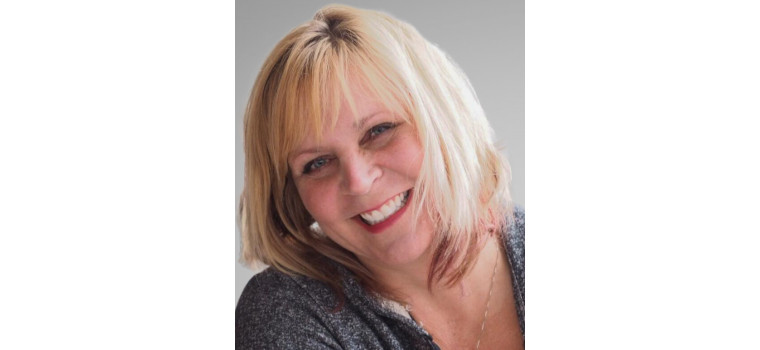People seek healthcare every day to better their conditions, but medical errors may result in unforeseen and even fatal outcomes. This stands true for hundreds of thousands of people each year, which is why companies like Value Capture are standing up to make tangible change by advocating for efforts toward the theoretical limits, including zero harm. Acting upon their mission statement,* Value Capture has generously provided support to the Patient Safety Movement Foundation and amplified the voice towards patient safety for all.
To further share word of Value Capture’s vision, Patient Safety Movement Foundation’s Development Intern Kate-Yeonjae Jeong had the opportunity to interview Ms. Shana Padgett, a Senior Advisor with Value Capture. She has been with the company for more than five years.
If you’d ask Ms. Padgett who she is outside of her role within Value Capture, her answer would be immediate: “The first thing I would say is that I’m a mom,” she responds, “I have kids, who are now adults. I’m a learner, I’m a partner, and I’m a lifelong person working in healthcare.” However, the list of what forms her identity doesn’t stop there: “In addition to that, for the last 25 years, I have been a person working to improve healthcare.”
To Ms. Padgett, patient safety is not only crucial, but foundational. “Value Capture exists because our founders believed in workplace safety,” she says. Despite starting in the wholly different arena of manufacturing, its first non-executive chairman, Paul O’Neill, Sr., was dedicated to zero harm for his workers and customers. “Value Capture was born out of the desire to transfer learning and approach at work in another industry to healthcare,” Ms. Padgett tells us, “That’s why we are in the patient safety business. It’s not a fight for safety, but rather a right.”
Ms. Padgett’s active advocacy for patient safety really began in the beginning of her career, which she pinpoints towards college. “I didn’t know I was involved with the patient safety movement back then, but now that I reflect, I’ve really always been a part of it.” she says.
“As I moved through my work towards management, supporting others, and even teaching school for four years, I realized that I’ve been a part of the movement in a lot of ways that are more implicit than explicit.”
Patient safety made a direct impact on Ms. Padgett early on in her career when she was working in a reference lab as a clinical laboratory scientist.
“Many of the mistakes you catch on your own before they make their way to the patient,” Ms. Padgett shares with honesty and visible emotional vulnerability, “I made an error calculating a certain test for a patient that had received a transplant. That error went through and there was a change made to their medications. That decision led to life-long implications for the patient.”
Such minuscule errors, sometimes overlooked due to human error, led Ms. Padgett to experience secondary trauma. “I put processes in place for myself so that I would never make that sort of mistake again,” Ms. Padgett affirms, “We learn the diagnostic work that we do can be faulty, which could lead to a bad outcome for a patient. It is strange to have that knowledge but then step into work that is not highly reliable, not reproducible, and hard to ensure there’s never a mistake.”
“I don’t believe I have ever experienced an error,” she continues, “But my son was in a traumatic accident when he was in college. They saved his life, but there were many things that went wrong, mainly around communication. “My son underwent preventable errors that led to more surgeries and unnecessary pain, but thankfully, he is okay now. It was hard to go through that but we have to remember that everyone was doing the very best they could.”
Ms. Padgett is focusing her vision on fixing things instead of finding blame. Through such traumatic events, Ms. Padgett is finding power in moving forward, improving communication, and whatever it takes to close the gap within the reliability of the system.
“My personal patient safety goal is to not just solve that problem as we find it, but put something in place so that problem doesn’t happen for anyone else,” she states. “Getting better alone isn’t going to allow us to achieve zero. Achieving zero means that we must learn from each other before we make that mistake.”
Such missions and aspirations have solidified her heart in healthcare and dedication towards improving the quality of others’ lives. “The alignment of our mission is why we’re excited to raise the voice of the Patient Safety Movement Foundation,” Ms. Padgett answers.
The Patient Safety Movement Foundation has an outstanding goal of achieving zero preventable patient harm by 2030- which is a bold and inspiring mission. Ms. Padgett finds admiration in this goal, as she is constantly inspired by those who put the theoretical limit on the number zero. “There shouldn’t be any other goal than zero when talking about avoidable harm,” she defines.
When asked which aspects of the Patient Safety Movement Foundation she was most moved by, Ms. Padgett responded that she was propelled by how the foundation brought people together collaboratively to support them towards action. “Having the general public fully understand what is possible and using the voice of the client to champion the cause is key,” she says.
One of the ways the Patient Safety Movement Foundation is bringing light to public awareness and truly interconnecting patient narratives is through the 2022 World Patient Safety, Science & Technology Summit. The Summit will be produced virtually April 29 and 30.
Ms. Padgett finds great interest in the summit due to its focus on people coming away with action. “It is inspiring to see like-minded people coming together with their experiences and share of things that have and have not worked,” she responds. “We are happy to partner and support you to learn from you all!”
When asked if she believes other companies should get involved, Ms. Padgatt returns, “Why isn’t every business focused on patient safety?”
To further elaborate, Ms. Padgett circles back to Paul O’Neill, Sr. “He was in the aluminum manufacturing business, before that in the paper business, and even before that, the government,” she explains. “At the end of the day, all businesses are consumers of healthcare,” she says, “Whether as patients, as a provider of health coverage or paying for time away from work when employees are unwell or harmed.”
Ms. Padgett points out that there could also be businesses unrelated to healthcare that could have innovative approaches. “Solving problems has no straight-cut answer,” she remarks. “If you have to pay, wouldn’t you want to pay to make it better than pay for the errors that have happened? That same money would either go towards improving or recovering. There is no business that shouldn’t be involved.”
To Ms. Padgett, there is only one question that truly needs to be asked. “One must ask themselves: “This could be better; how can I be a part of it?” For all the reasons, Ms. Padgett encourages to pick one and surge forward for a better cause.
A huge thank you to Ms. Shana Padgett for her heartfelt, raw, and straightforward words on medical errors and a better future. We sincerely appreciate you sharing your personal experiences and affirmations, and are excited to inspire an eye-opening experience for others. Special thanks to Value Capture for its generous support of the Summit, we are honored to be in partnership with fellow safety advocates.
For more information on how your company can become a sponsor of the 2022 World Patient Safety, Science & Technology Summit like Value Capture, please contact Monica McDade by email: [email protected].
*Value Capture’s Mission Statement: “Value Capture supports leaders who seek to dramatically improve the performance of their healthcare organization toward the theoretical limits, including zero harm.”
**This interview has been edited and condensed.**





